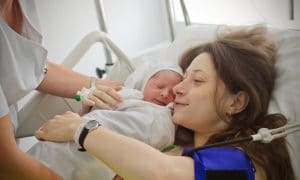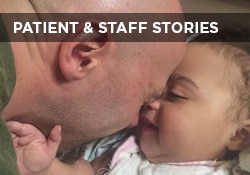This website uses cookies so that we can provide you with the best user experience possible. Cookie information is stored in your browser and performs functions such as recognising you when you return to our website and helping our team to understand which sections of the website you find most interesting and useful.

Susan E. Mazer, Ph.D. Blog
Thoughts and ideas on healthcare
Hi, and welcome to my blog! I'm Susan E. Mazer -- a knowledge expert and thought leader on how the environment of care impacts the patient experience. Topics I write about include safety, satisfaction, hospital noise, nursing, care at the bedside, and much more.
Moms, Babies, and the Physical Environment Where They Meet
August 18, 2017
 In all cases, the physical environment into which an infant is born can either promote or hinder growth, wellness, and development.
In all cases, the physical environment into which an infant is born can either promote or hinder growth, wellness, and development.
Stress in the mother transfers to stress in the infant.
Studies that were done to understand the developmental issues of pre- and full-term infants were published in the annals of neonatal research in the early 1990s.
Today, we know the following:
- High noise environments impede the development of low-birthweight infants.
- Stress releases Cortisol, which impedes neurological development in newborns.
- Stress slows labor.
- The environment of the mom carrying the baby allows the infant to development auditory reflex to the point that the baby will recognize the voice of its own mother.
- A balance between over-arousal and sensory deprivation is critical.
Research on Sensory Development
The dominant research in the field has been done by Perinatalogist Stanley Gravens and Neonatalogist Robert White. While their approaches cover different areas, they both focus on sensory development to permanent neurological damage that can happen in an environment that’s not designed for infants.
In a brief conversation I had with Dr. Gravens around 1998, he expressed frustration with the idea that the music of Mozart would make babies smarter. He described a child, then eight years old, whose mother had put headphones on her tummy during pregnancy.
As a result, this child had a hypersensitivity to sound. Dr. Gravens blamed ignorance and extremism in parents trying to control the future of their unborn children.
At the same time, speaking at a neonatal nursing conference, Dr. White said the only thing we know for sure is that infants need the regulation of circadian rhythms in order to develop the way they should. In a recent paper available on Medscape, he points to “neuroprotection” of the infant and ensuring that environmental controls are paired with the presence of the parent.
Quiet Isn’t Always Good
Keeping a nursery quiet and avoiding bright light is helpful if there are also periods of more light and more activity. Over protection of the infant can carry the risk of sensory deprivation, when an infant has no or minimal arousal from their surroundings.
The C.A.R.E. Channel is designed to create a healing environment. Its use in labor and delivery has been experienced as calming. Newborns and babies in the NICU have also found it to be relaxing.
Here’s one story from the parents of Skye and Oliver:
As we continue to study infant development and how a mother’s anxiety and stress affect her infant, clearly it is better to err in “calmer” than to ignore it.
P.S. If you like this post, please do me a favor and share on LinkedIn, Twitter, Facebook, etc. Also to get automatic notices when a new post is published, please subscribe. No spam – just great content. Thanks!










